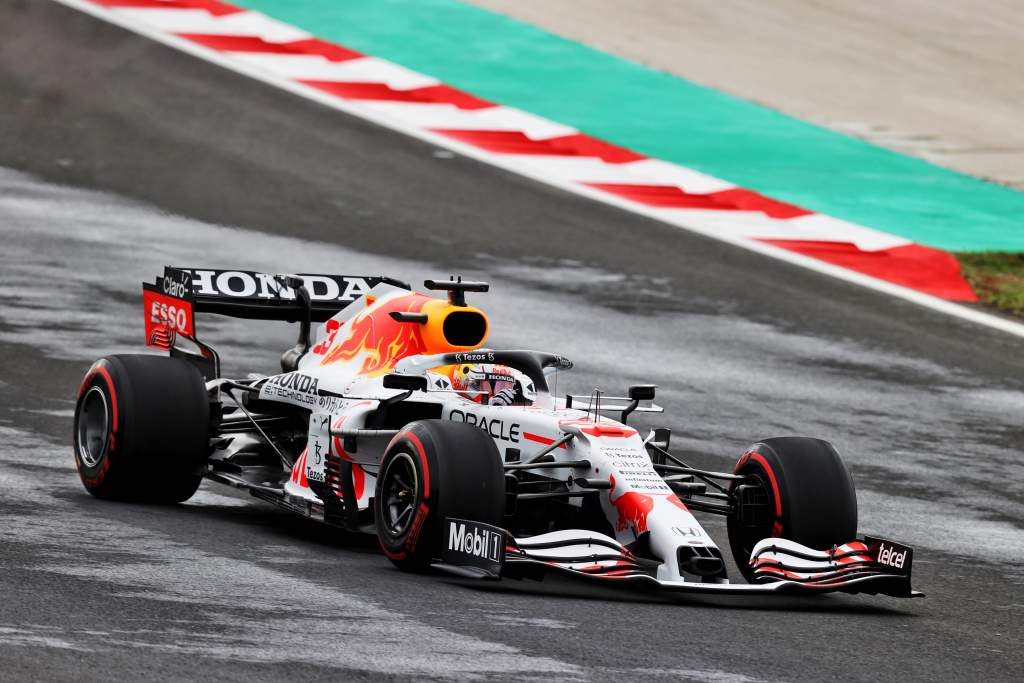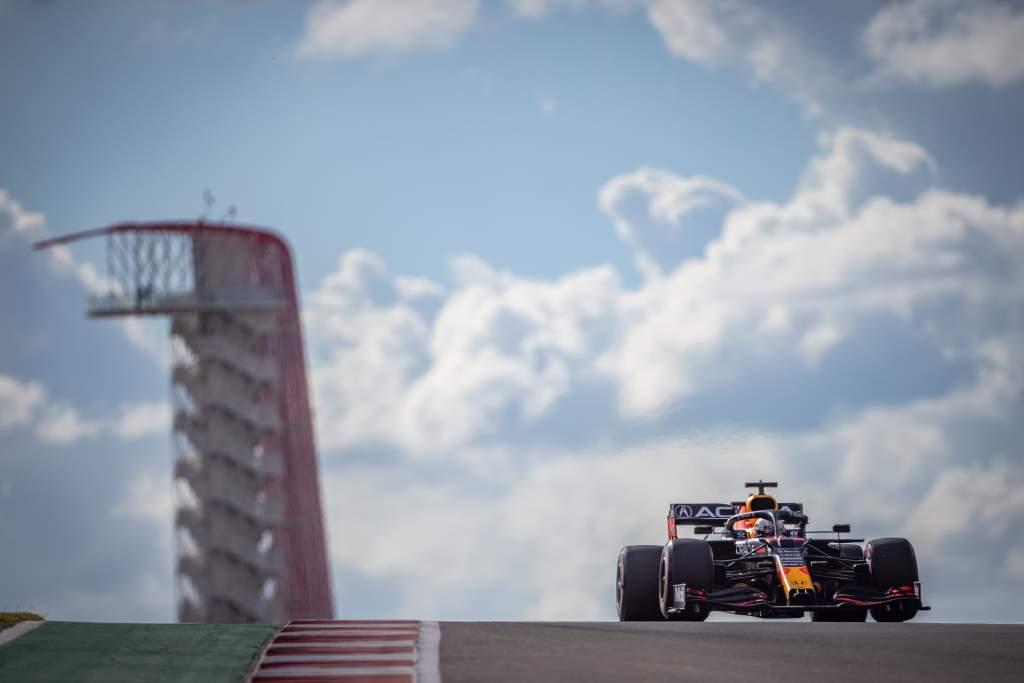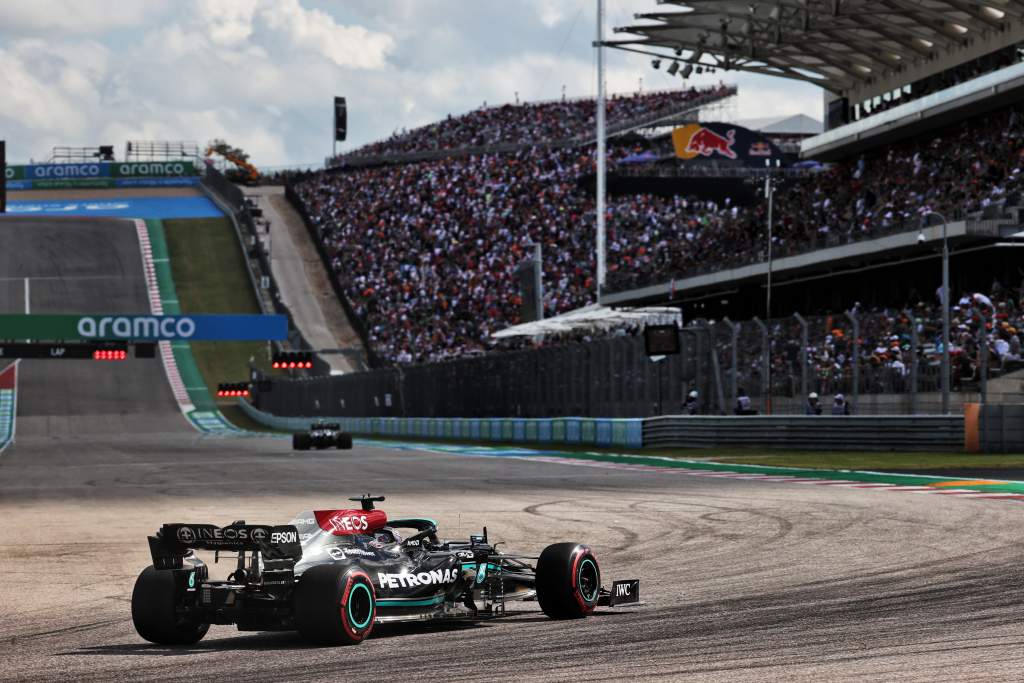Up Next

In the space of two days Mercedes’ dramatic sinking rear end has been a) revealed to the world and b) revealed as probably not the magic bullet that many had assumed when that Istanbul rearward-facing footage from the Mercedes was shown.
The contest between Max Verstappen’s Red Bull-Honda and Lewis Hamilton’s Mercedes for pole around the Circuit of the Americas was clinched by the former, by a handy couple of tenths margin. Hamilton only just scraped ahead of Sergio Perez in the second Red Bull by a scant few hundredths.
So just why was the competitive picture between them so different at the two tracks? Was the Mercedes’ greater diffuser stall less valuable around Austin than Istanbul? Was there anything else about the American track which may have played into Red Bull’s favour and against Mercedes?
“It was maybe a tiny bit of a surprise,” said Verstappen, “but you can clearly see it has been swinging a bit throughout the whole season.
“Luckily it’s still doing that. I’m of course happy with the performance we’ve had today.
“Let’s find out tomorrow in the race, if it’s again a different story. And then of course we’ll move on again to the next race and that can be again a different story because you can maybe look like favourites going into the weekend, but you still need to pay attention to every single detail to try and make it work.
“It’s so closely matched that if you maybe miss one tiny detail or you just can’t bring it together for whatever reason, you miss out. And that’s what happened to us for example in Turkey.”

In that last sentence is contained the most significant part of the answer to the questions posed here: Red Bull significantly underperformed in Turkey.
Mercedes was no faster relative to the rest of the field there than in the season to date – in fact slightly slower (as we highlighted here).
By far the bigger factor was just how much Red Bull was struggling at Istanbul, where it qualified barely any faster than Ferrari, a car which is usually comfortably outperforms.
Here are the relevant numbers:
PACE ANALYSIS TURKEY vs USA
Red Bull advantage over best non-Merc
Turkey: 0.08% USA: 0.75%
Mercedes advantage over best non-Red Bull
Turkey: 0.48% USA: 0.52%
Mercedes advantage over Red Bull in Turkey: 0.40%
Red Bull advantage over Mercedes in USA: 0.22%
It shows a performance swing between the two title-contending cars of over 0.6% from one race to the next – by F1 terms a massive margin. Furthermore, the Austin gap between the two cars in qualifying is much more typical of the season than was Istanbul.
Verstappen was never satisfied that he was getting the Red Bull’s tyres working properly in Turkey as he struggled all weekend with an understeer balance.
“I feel it was to do with the tarmac there,” he said. “With tyres you can get a lot of different behaviours and it makes a big difference.”
The Istanbul asphalt was incredibly grippy, which resulted in a bigger boost in rear grip than front, which took the Red Bull further out of its balance sweet spot than most other cars.
The team was reluctant to tune the resultant understeer out with a reduction in rear wing because of the expected high rear tyre degradation on race day.
So – as in Budapest but for a slightly different reason – Red Bull was stuck with a chassis imbalance throughout the weekend. It was enough to keep Verstappen a couple of tenths off the pace of the pole-setting, race-winning Mercedes of Valtteri Bottas there.

The tyre challenge around Austin this weekend is entirely different. The surface is low grip, especially at the untypically high track temperatures. It’s also extremely bumpy.
Being a high-rake car, the Red Bull tends to run its rear suspension somewhat softer than Mercedes. That’s a boon over the bumps and kerbs and the Red Bull’s superior traction out of the Turn 11 hairpin was sometimes audible as the Mercedes would flare up with a brief spike of wheelspin.
It was a similar story out of the last corner, where Perez and Verstappen were respectively second and third fastest (behind Lando Norris’ McLaren), with Bottas and Hamilton only ninth and 10th.

The Mercedes’ inherently low drag and its enhanced diffuser stall since the Silverstone upgrade was still working powerfully – as could be seen by its much greater end-of-straight speeds.
Through the speed trap down the back straight just before the Turn 12 braking zone, Hamilton was fourth-fastest at 200.9mph, with Perez and Verstappen 17th and 18th respectively, around 3mph slower.
But the Red Bull was getting onto that straight quicker from the exit of Turn 11. It’s the time taken to get from the beginning of the straight to the end of it which is much more important than end-of-straight speeds and in this comparison the Mercedes’ gain was relatively small.
It was consistently slightly quicker than the Red Bull through Sector 2 (which includes that back straight), but by less than 0.1s. The Red Bull was able to claw that and a little more back through sectors 1 and 3.
The crucial differentiating section of the first sector is the speed through the high-speed S-bend sequence of Turns 3-6. Here is where the Red Bull was clearly better, as reflected in the respective exit speeds of Verstappen (149mph) and Hamilton (148mph) on their final Q3 laps. Interestingly both were substantially faster than their respective team-mates at that part of the track.
The Mercedes’ enhanced floor stall – made possible by the changes around the bargeboard and floor edge introduced at Silverstone – has given valuable extra performance by enhancing the W12’s straightline speed. But the benefit that will bring will vary from track to track.

Austin’s high-speed esses sequence and the long duration quick sequence of Turns 16/17/18 plays to the Red Bull’s higher downforce ceiling. Although Mercedes is reluctant to put a number on it, it feels that the layout is slightly less favourable to its stall advantage than Istanbul.
But even with all that, it’s still a close contest between the two cars, close enough that Red Bull set out on the back foot and only emerged ahead as the weekend went on. It could yet even revert the other way in the race.
“We just had a bit of a struggle,” said Hamilton. “I felt we fell back from Q1… we were trying different things trying to improve it and I think among it all was a really good lap but whether it would have been good enough, I don’t know.
“I don’t know if we got slower or they got faster. They were very fast and that’s just shown by the fact that they are both right up there.”
Both cars have pulled out a lot of performance over the rest of the field since Silverstone, the Mercedes slightly more so. But Austin qualifying suggests that the see-sawing balance between them is ongoing – and that the fear of the tension of the title contest being lost to an overwhelming late Mercedes surge is not necessarily going to be realised.








